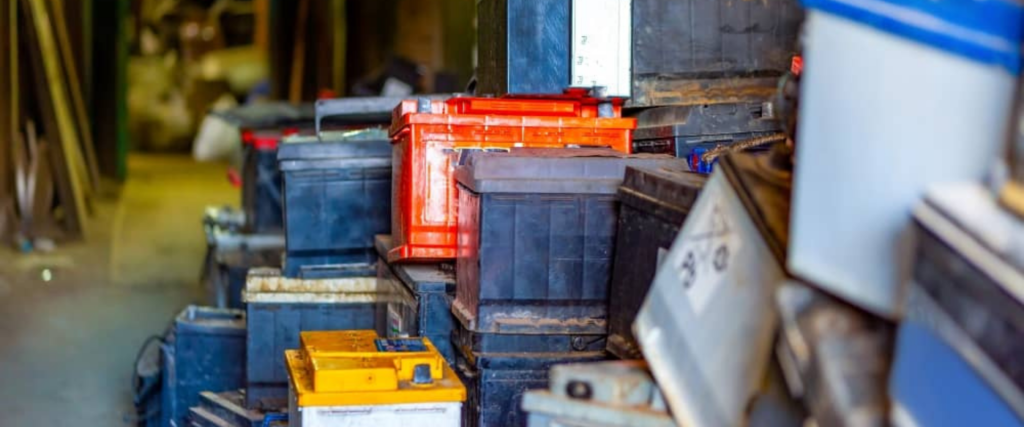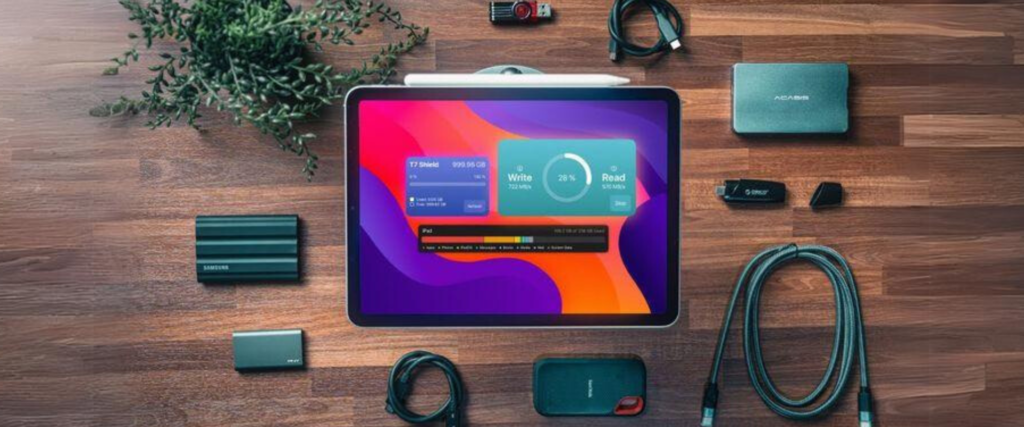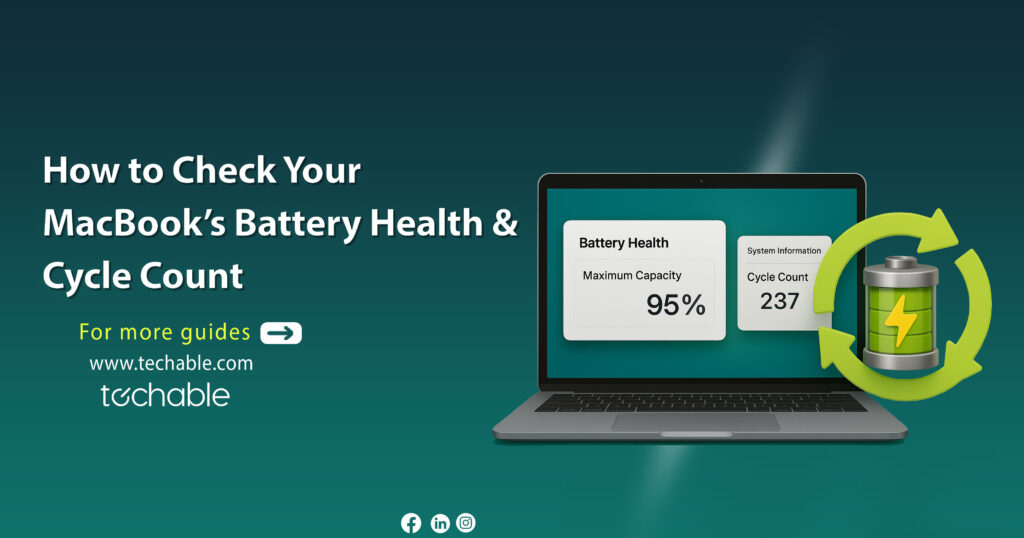Let’s talk about something super important but not always on our radar – how to dispose of old car batteries. You might not think about it much, but the way we handle these old batteries makes a huge difference to our planet. Now, here’s a fun fact: In the U.S., we’re doing a pretty awesome job with this.
Believe it or not, 99% of traditional car batteries get recycled. That’s right, 99%! It’s a stat that puts these batteries at the top of the recycling charts (Battery Council International). This isn’t just good news; it’s a testament to how we can make a positive impact when we work together. So, let’s dive in and discover how each of us plays a part in this success story and why it matters so much.
Understanding Traditional Car Batteries
Ever wonder what gives your car that initial vroom-vroom when you turn the key? That’s the magic of a traditional car battery, also known as a lead-acid battery. These batteries have been the go-to power source for cars for decades. They’re like the unsung heroes under the hood, starting our engines and powering our car’s electrical systems.
Why Recycling Matters
Just like electric car batteries, conventional car batteries get old or kaput, they can’t just be tossed in the trash. Why? Because they contain lead and acid – stuff that’s not great for Mother Nature. If they end up in landfills, they can leak these harmful substances into the environment. That’s bad news for soil, water, and overall ecosystem health.
The Good News
The good news is that these batteries are incredibly recyclable. Almost every part of a lead-acid battery can be reclaimed and used to make new batteries or other products. This is a win-win because it reduces waste and conserves resources. Plus, by recycling, we’re cutting down on the need to mine new lead, which is a pretty energy-intensive process.
So, what’s your role in this? It’s simple but significant. When your car battery reaches the end of its life, don’t just leave it to collect dust in your garage or, worse, throw it in the bin. Instead, take it to a recycling center or back to the place where you bought it. Many auto shops and retailers offer battery recycling services, often at no cost to you.
By understanding the importance of these batteries and the impact of recycling them, you’re already taking a step in the right direction. Remember, every recycled battery is a small victory for our planet!
The Recycling Success Story in the U.S.
Now, let’s zoom in on a pretty impressive fact about car battery recycling in the U.S. Did you know that we’re kind of world champions in this arena? With a whopping 99% recycling rate, traditional car batteries are the most recycled product in the country. That’s a higher rate than paper, glass, or even plastic bottles! (Battery Council International). It’s a stat that deserves a round of applause!
How Did We Get Here?
You might be wondering, how did we get to this point? Well, it’s a combination of effective laws, responsible industry practices, and, most importantly, people like you making the effort to recycle. In the U.S., strict regulations ensure that batteries are handled properly from the moment they’re spent to their reincarnation as new batteries. This system keeps harmful materials out of our environment and puts valuable components back to good use.
The Role of Retailers
Retailers are also MVPs in this story. Many places that sell car batteries also take back the old ones for recycling. This makes it super convenient for you to do the right thing. Just think about it: when you go to buy a new battery, you can hand over your old one right there and then. No fuss, no muss!
A Community Effort
But let’s not forget the most crucial players in this game: everyday folks like you and me. Our decision to recycle these batteries makes a world of difference. By taking that small step of returning our used batteries, we’re keeping toxic materials out of landfills and helping to conserve natural resources. It’s a simple action with a big impact.
A Model for Others
What’s happening in the U.S. with car battery recycling is something to be proud of. It’s a model that shows how effective recycling can be when everyone plays their part. From government policies to individual actions, it’s a collective effort that’s paying off in a big way for our environment.
Recognizing the Signs of a Bad Battery
Before we dive into recycling, it’s crucial to know when a battery is calling it quits. After all, you don’t want to replace a battery that’s still got some life in it. So, how do you tell if your car battery is on its last legs? Let’s break down the telltale signs.
Sign 1: Slow Engine Crank
When you turn the key (or push the start button), does your car take longer than usual to start? If it feels like the engine is dragging its feet to get going, that’s a classic sign your battery is struggling.
Sign 2: Check Engine Light
That little check engine light on your dashboard isn’t just for decoration. Sometimes, it lights up because your battery power is weak. Sure, it could mean other things too, but it’s worth getting your battery checked if you see that light.
Sign 3: Low Battery Fluid Level
Most car batteries have a translucent part of the casing where you can keep an eye on the battery’s fluid level. If it’s below the lead plates inside, it’s time to test the battery and charging system.
Sign 4: The Swollen Battery Case
Ever seen a battery that looks like it’s been hitting the gym too hard? Extreme temperatures can cause your battery case to swell, which is a clear sign that your battery’s health is compromised.
Sign 5: Battery Age
Batteries don’t age like fine wine. If yours is over three years old, it’s time to start monitoring it closely. After five years, you’re in the danger zone where battery failures are more common.
Sign 6: Odd Smell
If you catch a whiff of rotten eggs under the hood, that’s not just unpleasant – it’s a warning. A damaged battery can leak gas, and that sulfuric smell is a big red flag.
Sign 7: Electrical Issues and Dim Lights
The battery powers all the electrical components in your car. If you notice flickering lights or electrical issues, it could be a sign that the battery is failing.
Better Safe Than Sorry
If you’re noticing any of these signs, it’s better to get your battery checked sooner rather than later. A failing battery isn’t just an inconvenience; it can leave you stranded. And when it’s time for a new one, remember all that good stuff about recycling your old battery!
How to Recycle Your Car Battery
Step 1: Know When It’s Time
First things first, how do you know when it’s time to recycle your car battery? Usually, a car battery lasts about 3 to 5 years. If your car starts groaning when you turn the key or your headlights are dimming, it might be time for a new one. And that means it’s also time to think about recycling the old one.
Step 2: Safety First
Before you remove your old battery, let’s talk safety. Car batteries are heavy and contain hazardous materials. So, gear up with some gloves and safety glasses. Make sure the car is off, and if you’re not comfortable removing the battery yourself, no worries – your local auto shop can help out.
Step 3: Find a Recycling Spot
Now, where to take that old battery? Most auto parts stores and service centers will happily take it off your hands and ensure it’s recycled properly. Some might even offer you a discount on your new battery in exchange. You can also check out Earth911’s recycling locator to find the nearest recycling facility.
Step 4: Transporting the Battery
When transporting the battery, keep it upright to avoid any leaks. Place it in a sturdy box or plastic container. If you notice any cracks or leaks, be extra careful and let the recycling center know when you drop it off.
Step 5: Drop It Off and Feel Good!
The final step is the easiest – just hand over the battery at your chosen recycling spot. And that’s it! You’ve done your part. By recycling your old car battery, you’re helping to keep hazardous materials out of landfills and contributing to the creation of new batteries. It’s a small action with a big environmental impact.
The Detailed Process of Car Battery Recycling
The recycling of car batteries is a sophisticated and crucial process, integral to environmental conservation and resource management. This section delves into the detailed steps involved in recycling traditional lead-acid car batteries, highlighting the meticulous procedures that ensure both environmental safety and resource efficiency.
Collection and Initial Processing
The journey of a used car battery begins with its collection from various drop-off points, including auto shops, retailers, and dedicated recycling centers. These batteries are then transported to specialized recycling facilities, where they undergo an initial assessment to sort and prepare them for the recycling process.
Breaking Down the Battery
At the recycling plant, the first critical step involves breaking down the batteries in a controlled environment. This process, known as battery crushing, separates the battery into its core components: lead, plastic, and electrolyte solution.
Plastic Component Recycling
The plastic components, primarily the casing of the battery, are carefully extracted and cleaned. These plastics are then melted and formed into pellets. These recycled pellets are often used to manufacture new battery cases and other plastic products, exemplifying a sustainable reuse of materials.
Lead Recovery and Refinement
The lead components, including plates and other lead-containing parts, are smelted in furnaces. During this process, impurities are removed, and the purified lead is then cast into ingots. These ingots are a valuable resource for the production of new lead plates for batteries, as well as for other applications where lead is required.
Acid Neutralization and Conversion
The sulfuric acid electrolyte is handled with utmost care due to its hazardous nature. It undergoes a neutralization process that converts it into water, which is then treated to meet environmental safety standards before release or reuse. Alternatively, the acid can be converted into sodium sulfate, a non-toxic compound used in various industries, including the manufacture of textiles, glass, and detergents.
The Closed-Loop System
This comprehensive recycling process exemplifies a closed-loop system, where nearly 100% of a battery’s components are reclaimed and repurposed. This system significantly reduces the environmental impact of lead-acid batteries, prevents the release of hazardous materials into ecosystems, and diminishes the need for new raw materials.
Final Thoughts on How to Dispose of Old Car Batteries
In wrapping up our journey through the responsible disposal of old car batteries, it’s clear that each of us has a crucial role to play in shaping a more sustainable future. At Techable, we’re committed to leading by example in this environmental endeavor. Just as we advocate for the proper recycling of car batteries, we also embody these principles in our own practices.
Our dedication to refurbishing and selling cellphones is a testament to our commitment to reducing e-waste and promoting a circular economy. By choosing to refurbish and reuse, we’re not just offering quality products; we’re actively contributing to a greener planet. We encourage you, our readers and customers, to join us in this vital mission. Together, through responsible actions like recycling car batteries and supporting sustainable practices, we can make a significant impact on our environment, ensuring a healthier world for generations to come.



















0 Comments